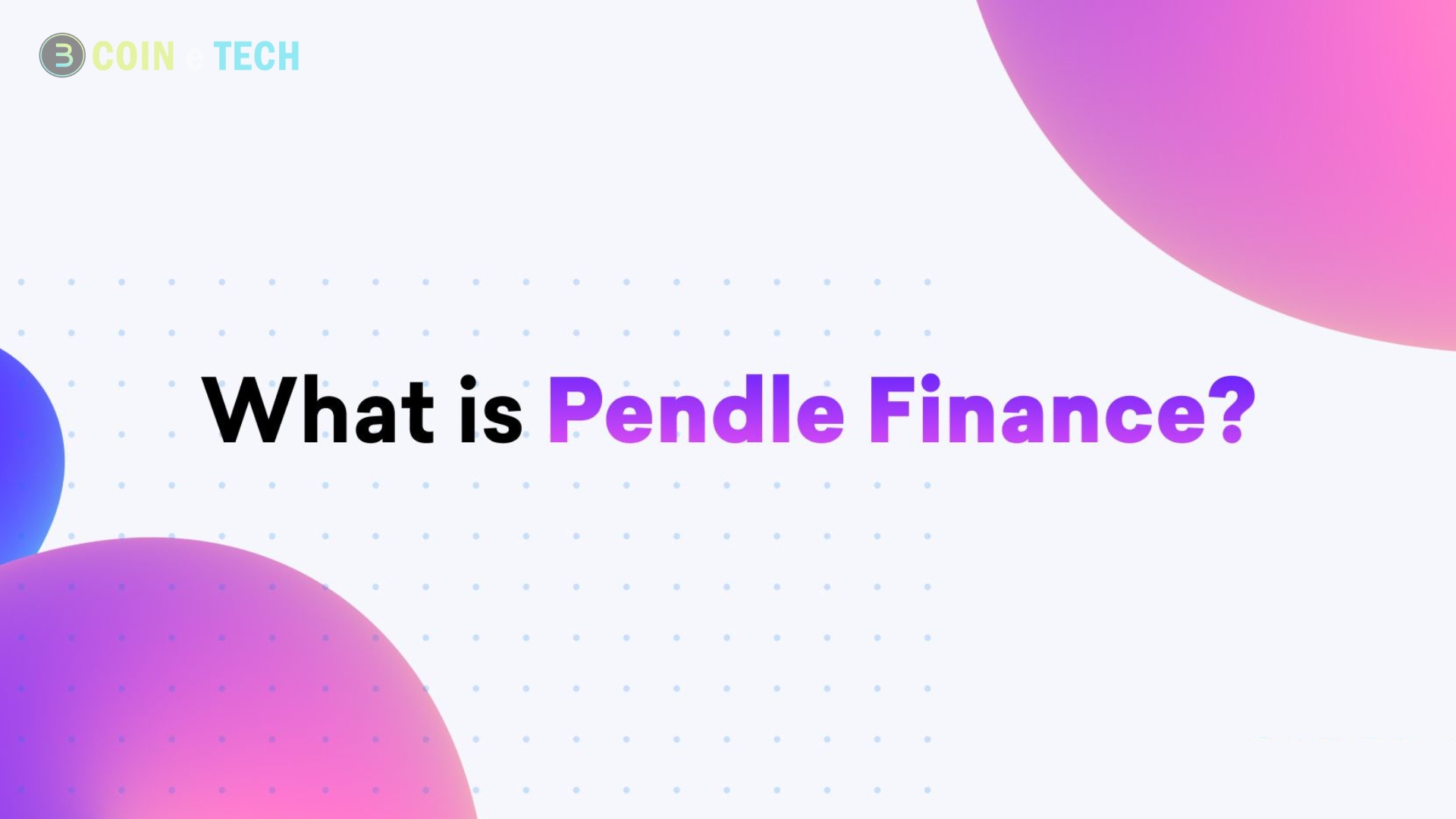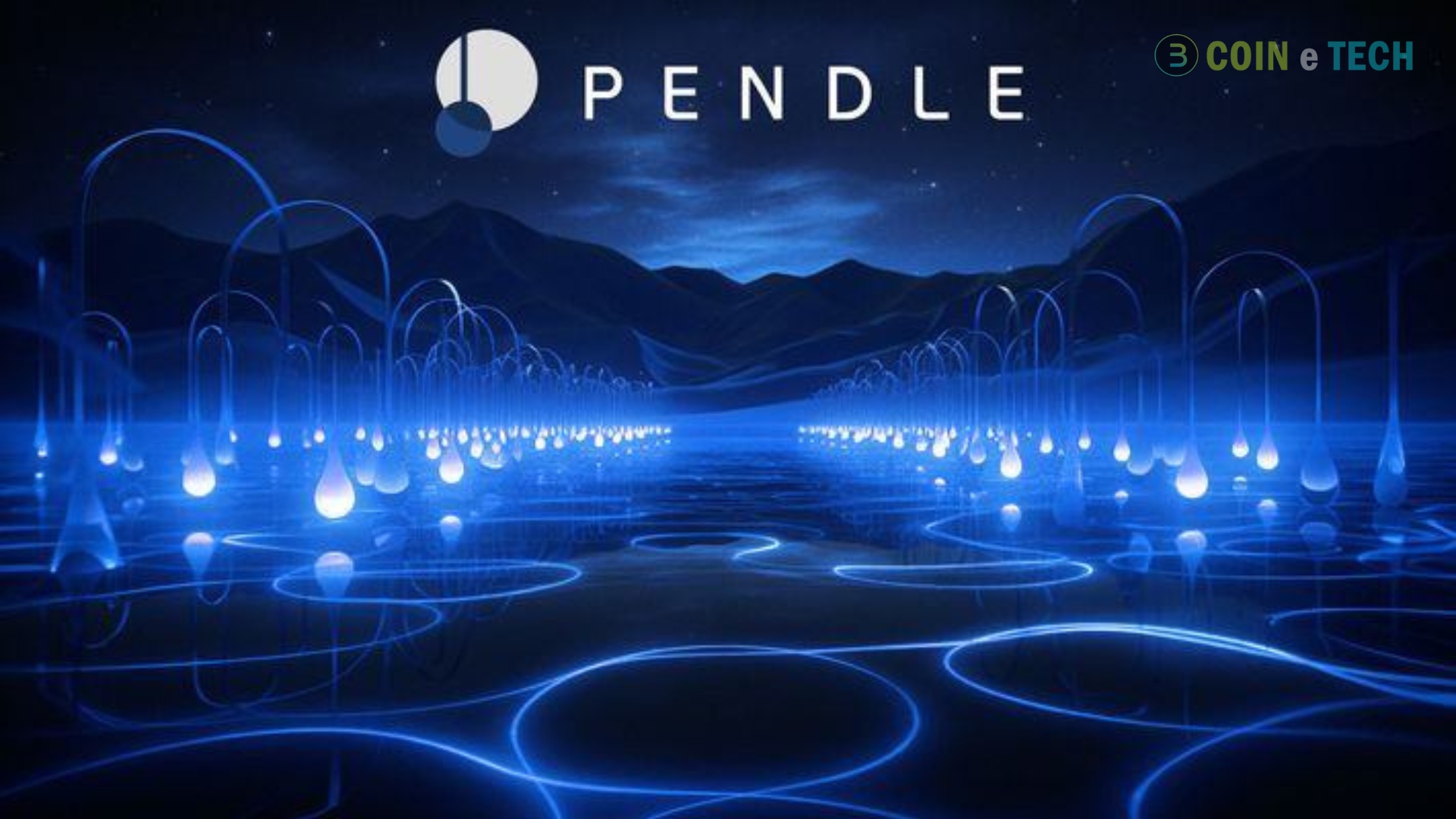Pendle Finance. In the ever-changing decentralized finance (DeFi) world, Pendle Finance stands out as a trailblazing platform that revolutionizes user interaction with yield assets. Pendle Finance provides a fresh opportunity for investors and traders to enhance their DeFi strategies through its novel method of tokenizing future payouts. From its beginnings and plans to its internal workings, tokenomics, and real-world uses, this book will cover it all for Pendle Finance.
What Is Pendle Finance?
Pendle Finance is a permissionless yield trading platform that runs on the Ethereum (ETH) blockchain and is a DeFi protocol. The underlying asset is represented by principal Tokens (PT) on Pendle Finance, and the future yield is symbolized by Yield Tokens (YT). Pendle Finance’s primary objective is to enable DeFi yield farmers access to capital and financial flexibility. This dual-token system makes it easier for customers to manage their assets and participate in various yield methods.
The automated market maker (AMM) in Pendle takes time decay into account, which is one of its unique qualities. This system helps reduce the risk of financial losses caused by mispriced assets, a significant problem with conventional AMMs. This feature allows consumers to effectively control their yield exposure and take advantage of market opportunities. Pendle optimizes capital allocation and bolsters exposure to future yields by continuously changing asset prices based on time decay.
Pendle Finance Origin
The DeFi industry saw the launch of Pendle Finance in June 2021. Developers TN Lee, GT, YK, and Vu were the ones who started it all. During its early stages, Pendle raised $3.7 million in capital from significant investors, including Bitscale Capital and Crypto.com Capital, who initially supported its mission.
Pendle is a South Korean company with over ten talented developers working tirelessly to improve yield management with innovative DeFi solutions. Pendle has made impressive progress despite being a very young company. It has capitalized on its experienced team, innovative product, and active user base to dominate the dynamic DeFi industry.
How Does Pendle Work?
Users can trade tokenized future yields on Pendle Finance, built on the Ethereum network. When users fund their Pendle accounts through smart contracts, their assets are tokenized into PT and YT, respectively. Tokens denoted by PT stand for the initial investment, and tokens denoted by YT for the asset’s yield over a specific time frame. Users can now trade PT and YT tokens separately, giving them more flexibility in yield management methods.
Users can control their exposure to the returns of multiple DeFi protocols and bet on future yields by trading these PT and YT tokens on Pendle’s platform. In addition, the automated market maker (AMM) on Pendle controls the value of PT and YT tokens according to variables like market demand and time decay, guaranteeing accurate and fair pricing for efficient trading. Users can easily adjust to changing market conditions or investment strategies by redeeming their PT and YT tokens whenever they want. This allows them to recoup their original assets and any dividends earned.
PENDLE Token
Within the Pendle Finance ecosystem, there exists a utility token called the Pendle token, which goes by the acronym PENDLE. PENDLE Holders can participate in a range of ecosystem activities, including voting on governance proposals, earning incentives for liquidity provision, and staking tokens for rewards. As of February 2024, around 97 million PENDLE tokens are in circulation out of a total and maximum supply of 231,725,335 tokens.
Within the Pendle ecosystem, PENDLE governs the protocol’s operations and value accrual procedures, among its many functions. The model is based on a hybrid inflationary framework, and the inflation rate is fixed at 2% forever. In the beginning, 37% went toward liquidity incentives, 22% went to the team, 15% to investors, 18% to the ecosystem fund, 7% to liquidity bootstrapping, and 1% was set aside for advisors.
Pendle changed the token distribution in October 2022. There are 65.1% of PENDLE tokens in circulation as of February 2024. The remaining 19.2% is split between the team, incentives, and the ecosystem fund, with 5.7% going to the team. The team’s tokens will vest in April 2023, and emissions will decrease by 1.1% weekly until April 2026.
Also Read: What Is BitFi? The DeFi Guide for the Bitcoin Network
What Is VePendle?
The Pendle Finance ecosystem features a governance token called VePendle, which stands for “Voting Escrow Pendle.”. You can acquire this voting power by storing your PENDLE tokens in a “voting escrow,” a smart contract, for a set amount of time.
Users can earn vePendle tokens by storing their PENDLE tokens in the vePendle smart contract. These vePendle tokens represent the user’s voting power in the Pendle governance system. Locking up users’ tokens improves their voting power in governance decisions proportionally. Within the Pendle Finance ecosystem, VePendle holders can vote on governance ideas, including changes to the protocol, fees, tokenomics, and other related topics.
Using Pendle
Pendle Finance allows users to maximize their defi experience through the following;
- Yield optimization: Pendle allows users to tokenize future yields from various DeFi protocols, enabling them to optimize their yield farming strategies by trading these tokenized future yields.
- Risk management: By separating principal and interest into distinct tokens, Pendle provides users greater flexibility in managing their risk exposure to different DeFi assets and protocols.
- Liquidity provision: Users can provide liquidity to Pendle’s trading pools, earning fees and incentives in return, thus contributing to the liquidity and efficiency of the platform.
- Speculation: Traders can speculate on future yields by trading tokenized yield assets on Pendle’s platform, potentially profiting from changes in yield expectations and market conditions.
- Governance participation: PENDLE token holders can participate in the governance of the PENDLE protocol, voting on proposals and decisions that shape the future development and direction of the platform.
- Staking rewards: PENDLE token holders can stake their tokens to earn rewards, incentivizing long-term engagement and support for the PENDLE ecosystem.
Conclusion
Pendle makes tapping into the cryptocurrency market’s yield trading potential easy. With Pendle’s user-friendly layout and thorough training, anyone can use it, whether an experienced trader or just starting with DeFi. Your yield trading activities can be more profitable by taking advantage of Pendle’s revolutionary features.






